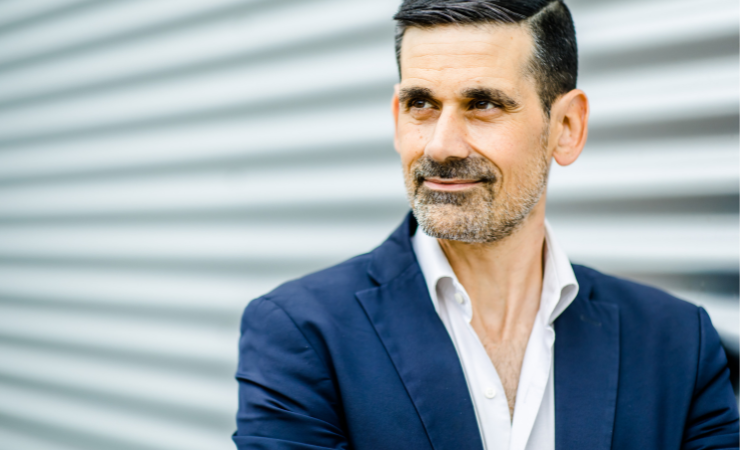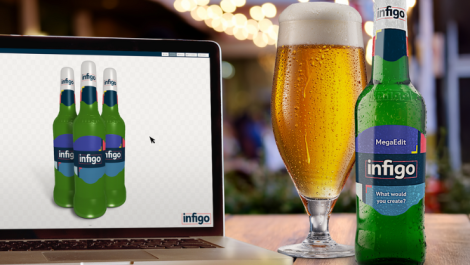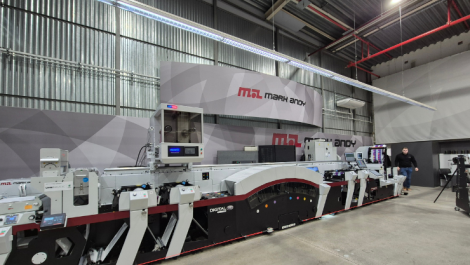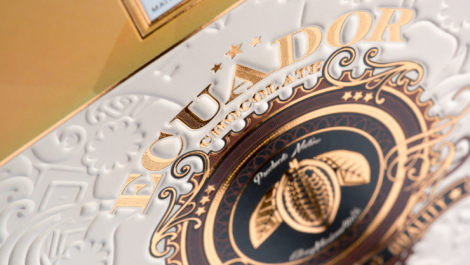At drupa 2024, Canon showcased the LabelStream LS2000 for the very first time outside of Japan. Sonia Sharma-Karia spoke to Edoardo Cotichini, senior manager, marketing, labels and packaging at Canon EMEA to find out more.
What does your role involve?
I lead the labels and packaging team within the marketing division of Canon Europe. We started this journey a while ago, and we are now at the point where we are fully committed to this important industry. To demonstrate that, as part of our 4600sqm stand here at drupa, this is the first time Canon has had a dedicated labels and packaging area at a trade show of this kind.
There are several reasons for this: first, we wanted to show our commitment to the industry and that Canon is serious about labels and packaging; then, for the first time outside of Japan, we are also showing the LabelStream LS2000, which is our latest label product. Labels and packaging are a growth area, and we see a lot of challenges out there for brand owners, as well as for label and packaging converters. I’m not saying digital is the answer to all these challenges, but many of them can be addressed by digital printing. Digital printing offers versatility and – one benefit that I see the most – ease of use, and that leads to greater efficiency.
What role is AI playing in digital labels and packaging?
There are certainly elements of AI that are being incorporated in our technology and I see a natural link between automation and AI as they both help businesses to work smarter and more efficiently. For me, though, automation should come first and businesses should automate as soon as they can.
If we talk about the LabelStream LS2000, automation was a strong consideration when we designed the press. Let me give you an example – with many of the inkjet presses out there, when the operator arrives in the morning, one of the first things they have to do is to clean the heads, so they need to put on gloves, get out wipes and then carefully clean the heads. But our press is capable of doing that all by itself. It’s quite an innovation and it also has other advanced features, such as an integrated spectrophotometer, which allows you to generate – literally at the press of a button – a new colour profile without needing to be a colour management expert.
Can you tell us more about the Canon LabelStream LS2000?
It’s still a prototype, but we’ve been running it regularly here at drupa. As it will be commercially available in 2025, we will soon finalise its development and move to mass production to bring it to market.
It’s been designed so that all the regular maintenance can be performed by the operator, which is a huge advantage because it means that, while some downtime is inevitable because machines do occasionally need to be maintained, the LabelStream LS2000 will experience minimal downtime. And while certain parts wear out and may need to be replaced, as is standard, most of those parts can be easily replaced by the operator. This also ties in with Canon’s approach to sustainability as it reduces the number of service visits required, and therefore engineers travelling either by car or plane, especially as label converters are often not based in big cities – they have large plants, which can be remote. Another important point is that it is inkjet and uses our water-based inks, which have been designed to be compliant with all the required certifications – so, for instance, any label that is required to be food compliant can be safely produced on our press. And for the time being, as far as we know, the LabelStream LS2000 is the only label press that can run with water-based inks at up to 40m/min.






